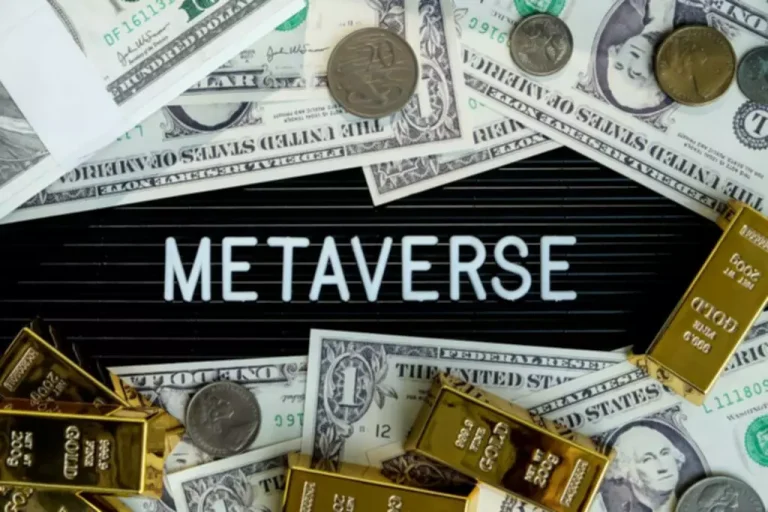When buying an ETF, investors place a trade in their brokerage account, and the transaction is often executed by market makers in a “secondary market” like a stock trade. Short sellers present liquidity, as they tend to be promoting into demand when share costs appreciate, and conversely looking to purchase again shares when prices decline. For instance, if most traders are optimistic about the asset’s future performance, ETF share prices increase, resulting in more demand of ETF shares. Short sellers who hold a contrarian view will borrow shares from brokers and promote them when there is extra demand for purchases after which buy them again later, when most investors are promoting. But the important thing level is that each primary market and secondary market liquidity play a role in providing a full image of ETF liquidity. In essence, the liquidity of the underlying holdings of an ETF immediately impacts the ETF’s liquidity.
This article will help advisors understand the nuances of ETF liquidity and the resources they can leverage to help them get the best trading execution for their clients. Passively managed funds invest by sampling the index, holding a spread of securities that, within the combination, approximates the complete Index when it comes to key risk factors and other traits. This may cause the fund to experience monitoring errors relative to performance of the index. Net Asset Value (NAV)
All else equal, ETFs that invest in extensively traded U.S. large-cap shares are more liquid than ETFs that commerce in much less liquid parts of the market similar to rising market debt and micro-cap shares. Liquidity ETFs invest in highly liquid securities, making it simpler for investors to purchase and promote shares at any time throughout market hours. Exchange The market the place securities, commodities, derivatives and different monetary tools corresponding to ETFs are traded. Exchanges, such as inventory exchanges, enable for honest and orderly trading and efficient circulation of securities costs.
Exchange Traded Fund (ETF) An ETF is an open-ended fund that gives exposure to underlying funding, normally an index. Unlike mutual funds, ETFs can be offered quick, bought on margin and often have choices chains hooked up to them. ETFs rely on arbitrage activities to keep the fund’s market worth according to its NAV.
When buyers need to sell their GreenTech ETF shares, a fluid redemption course of supported by the liquidity of the underlying holdings helps make positive that the surplus provide of ETF shares is efficiently absorbed. When the demand for ETF shares outweighs the provision within the secondary market, APs can ‘choose’ to create shares instantly from the ETF issuer. As provide outweighs demand within the secondary market, APs can ‘choose’ to redeem ETF shares to the ETF issuer. Ultimately, as lengthy as the AP can successfully and effectively commerce the underlying basket of securities, these demand and provide imbalances can be adjusted repeatedly.
How Should Buyers Choose A Liquidity Etf?
For much less liquid securities, corresponding to rising market equities, market makers might not be in a position to supply the securities. In this case, the ETF issuer might accept cash-in-lieu as part of the ETF basket, purchase those securities instantly from underlying security markets for the fund, after which cost related prices to the market maker. Before creating ETF shares, market makers might need to source underlying securities in the ETF basket by tapping into their very own inventory or buying etf liquidity from the underlying security market. When the demand for ETF shares exceeds or falls short of the shares available for sale within the secondary market, there shall be disparities between the ETF market worth and its intrinsic worth (NAV) based on underlying safety costs. The “secondary market” liquidity seen on exchanges is important for ETF buyers and merchants. However, in contrast to shares, ETFs possess one other layer of liquidity issues due to how they are created.

Each of those players has a definite position, and their collective actions contribute to the liquidity and overall effectivity of the ETF market. Adam Hayes, Ph.D., CFA, is a financial author with 15+ years Wall Street expertise as a derivatives trader. Besides his intensive spinoff buying and selling expertise, Adam is an expert in economics and behavioral finance.
You’re Currently Logged In To Multiple T Rowe Value Websites
The difference between the very best worth a buyer is willing to pay for an asset and the lowest price the vendor will accept to sell. While liquidity ETFs can be used for long-term investing, they’re sometimes not really helpful for this function. These ETFs are finest suited to investors who need frequent access to their cash and who’re keen to trade off some potential returns for liquidity. This materials is supplied for basic informational functions only and is not intended to supply legal, tax, or investment advice. Nothing contained in or on the Site should be construed as a solicitation of a proposal to purchase or offer, or recommendation, to amass or dispose of any safety, commodity, investment or to interact in another transaction. SSGA Intermediary Business presents a number of products and services designed specifically for varied categories of traders.

ETFs actually operate in a essentially completely different ecosystem to different instruments that trade on stock exchanges, corresponding to particular person stocks or closed-end funds. Whereas these securities have a fixed provide of shares in circulation, ETFs are open-ended investment vehicles with the power to problem or withdraw shares on the secondary market according to investor provide and demand. The first is “on‑screen” liquidity, which traders and market participants can see and supply (also often identified as the ETF secondary market). The second is the liquidity of an ETF’s underlying constituents, which may be accessed via the ETF creation/redemption course of (also often identified as the ETF primary market). The primary market then offers extra liquidity, as market makers have interaction Authorized Participants (APs) to create/redeem ETF shares to steadiness supply and demand, thereby preserving ETF share costs close to their intrinsic worth. Market makers will deliver ETF baskets to the AP in change for ETF shares.
Gauging Etf Liquidity
If the value of an ETF is larger than the worth of the underlying basket, then the ETF is said to be buying and selling at a premium. If the worth of an ETF is under the worth of the underlying basket, then it is buying and selling at a reduction. We present steering with ETF comparisons, portfolio methods, portfolio simulations and investment guides. Net asset value (NAV) of an ETF is the worth of the ETF’s assets, minus its liabilities, then divided by the number of excellent shares of the ETF. At Capital Group, we now have an ETF Capital Markets staff that works immediately with our Portfolio Strategy Management group to assist maximize the liquidity of our ETFs’ basket composition. There may be no assurance that a liquid market will be maintained for ETF shares.

Conversely, ETFs monitoring obscure or much less liquid indexes could face liquidity challenges, as the underlying belongings could be harder to trade, affecting the efficiency of the creation and redemption process. An ETF can have good liquidity even with lower buying and selling volumes because of the creation and redemption mechanisms. If creations and redemptions are simply facilitated, the actual trading volume in the ETF might not matter as a lot. Alternatively, even if an ETF has a excessive trading quantity and plenty of curiosity, however the underlying shares are illiquid, APs might discover participating in creations and redemptions tough.
Nyse’s Etf Liquidity Program Positive Aspects Momentum Amid Volatility Surge
Before trading any ETF, traders should perceive the liquidity of the ETF’s underlying constituents, which can impression an investor’s execution prices and total expertise buying and promoting an ETF. Simultaneously making offers to buy (bid) and sell (ask) securities at specified prices, market makers provide two-sided liquidity to different market individuals. They facilitate the exchange of securities between end traders by bridging the gap between the time when pure buyers and sellers enter the market.

The capacity to quickly purchase or sell an investment available in the market without impacting its value. Bid/Ask Spread The distinction between the best value a buyer is willing to pay for an asset and the bottom price the seller will settle for to sell.
Approved Individuals (ap)
The aim of a liquidity ETF is to provide traders with exposure to extremely liquid property that are straightforward to buy and sell. The ETF’s portfolio is often managed by a professional fund manager who seeks to copy the efficiency of the underlying index or benchmark as intently as potential. Investors typically incur the value of the unfold between the costs at which shares are purchased and offered.
Can Ordinary Traders Create And Redeem Etf Shares?
Throughout this time, ETFs with an assigned Less Active ETF Lead have showcased the importance of Less Active Leads in supporting glorious market quality in the ETF space. Less Active ETF Leads help protect thinly-traded ETFs from the chance of poor executions and Limit Up Limit Down halts during such extreme buying and selling environments. When evaluating the liquidity of an individual stock, investors solely must seek the advice of ADV as a result of there are a finite variety of shares available or excellent.
They work with liquidity suppliers of underlying securities to source liquidity, decrease buying and selling prices, and seek best execution. While a narrower bid-ask spread incessantly suggests better liquidity, a wider unfold isn’t always a sign of poor liquidity. The spread could be influenced by the liquidity of the underlying property and the effectivity of the market-making process.
These bid and ask costs are derived from the underlying baskets value and the assorted prices hooked up to that. Liquidity, in its broadest definition, refers to how rapidly or easily a safety can be purchased or offered for a value reflecting its price. For single stocks, the market worth can be outlined as the worth that somebody is willing to pay for the stock https://www.xcritical.com/ in the secondary market depending on the supply and demand at different costs. At the identical time, ETF shares may be created and redeemed within the so-called ‘primary market’ like a conventional mutual fund. Amid quite a few spells of surging market volatility in 2022, ETF spreads have widened out to new highs, elevating the risk of poor executions for investors.
